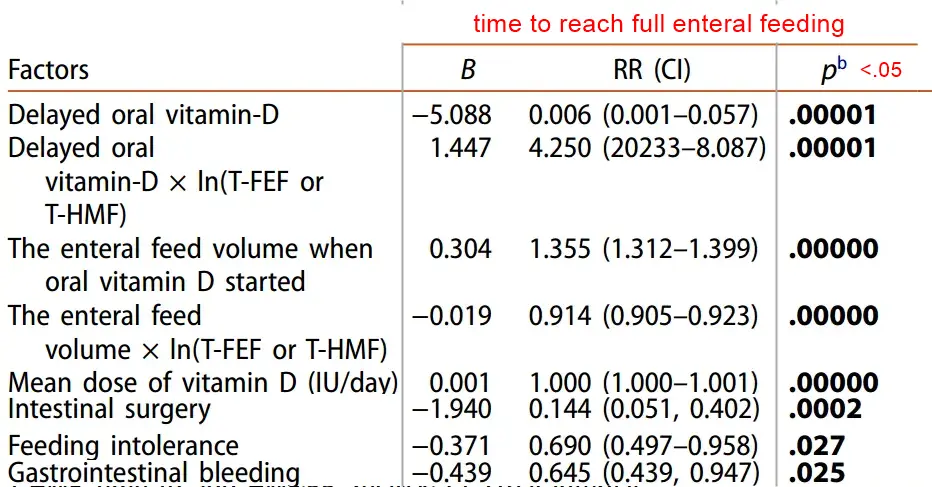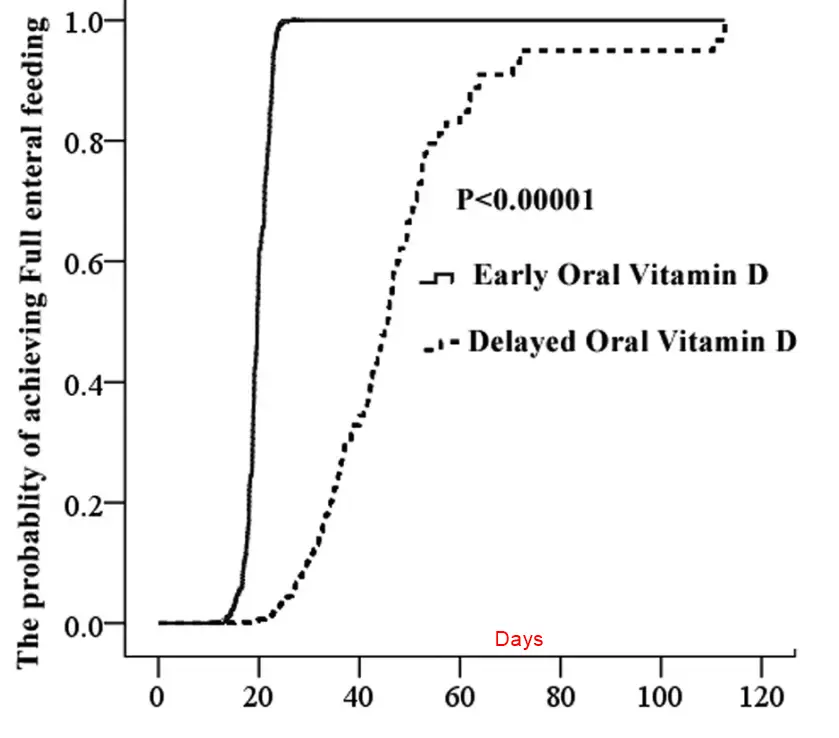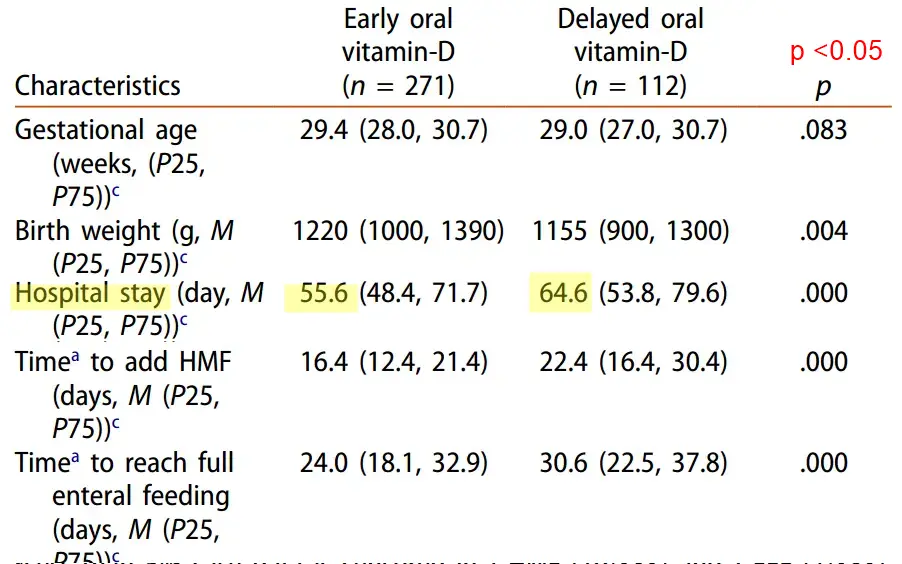Very Low Birth Weight Preemies are in hospital 9 days longer if Vitamin D was delayed
Oral vitamin D supplementation is associated with full enteral feeding in very low birth weight infants
J Matern Fetal Neonatal Med . 2025 Dec;38(1):2515426. doi: 10.1080/14767058.2025.2515426
Yie Huang 1, Ping Zhou 2, Ruiping Wu 3, Xiaomei Fan 4, Ping Zheng 5, Xintian Shen 4


9 fewer days in hospital if Vitamin D started soon

Background and aims: As vitamin D is mostly transferred to the fetus during the third trimester, preterm infants are born with lower vitamin D stores. However, most clinical guidelines do not suggest clearly when to initiate vitamin D in very low birth weight (VLBW) infants. This retrospective study aimed to assess whether the initiation of oral vitamin D supplementation was associated with full enteral feeding (FEF) in VLBW infants.
Methods: A total of 383 VLBW infants (gestational age, 24-32 weeks; birth weight, 570-1500 g) admitted to our neonatal intensive care unit between October 2018 and December 2022 were included in this study. To assess the independent association between oral vitamin D and FEF, univariate or multivariate Cox analyses were performed, adjusting for 16 major confounders (birth weight, initiation of enteral feeding, sepsis, the enteral feed volume when oral vitamin D started, etc.). Time-varying coefficients method is used to accommodate the non-constant hazard ratio implied by the proportional hazards assumption violation.
Results: Multivariate Cox regression for the time to reach full enteral feeding (T-FEF) and time to add human milk fortifier (T-HMF) were analyzed respectively. Delayed oral vitamin D supplementation (after postnatal day 13) was independently and negatively associated with the cumulative probability of achieving FEF (B - 5.088, RR 0.006 (0.001-0.057), p < .00001). Delayed oral vitamin D supplementation was independently and negatively associated with the cumulative probability of adding human milk fortifier (HMF) (B - 3.115, RR 0.044 (0.006-0.334), p = .002). The hazard effect of the delayed supplementation diminished over time, with the RR = EXP(-5.088 + 1.447 × Ln(T-FEF)) or RR = EXP(-3.115 + 0.729 × Ln(T-HMF)), respectively.
Conclusions: Our research suggests that earlier initiation of oral vitamin D is associated with improved FEF in VLBW infants.
📄 Download the PDF from VitaminDWiki
See also VitaminDWiki
-
- Giving 6,000 IU daily during pregnancy would reduce preemies by 4 X AND lower factures))
4.4 X more likely to have a preterm birth if low vitamin D while pregnant (India) - May 2022
Supplement preterm infants with vitamin D if less than 80 ng – RCT Sept 2021
Preemies should have vitamin D supplements – reaching an agreement – April 2021
